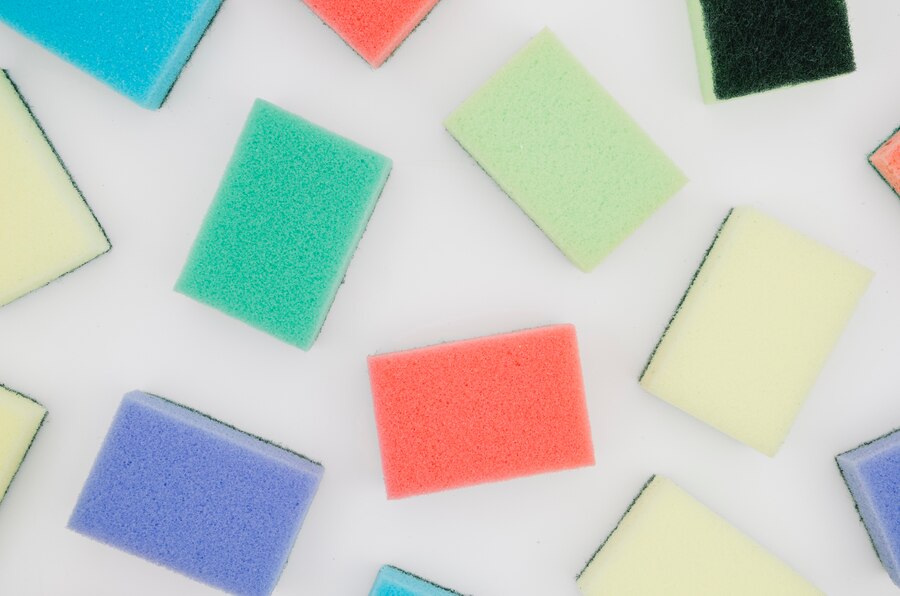EVA foam is a popular material in the world of crafting, cosplay, and DIY projects. Its versatility, durability, and ease of use make it a favorite among hobbyists and professionals alike. If you’re new to working with EVA foam, this guide will provide you with essential tips and tricks to get started and create amazing projects with confidence.
What is EVA Foam?
EVA (Ethylene-Vinyl Acetate) foam is a lightweight, flexible, and resilient material commonly used in various applications, from shoe soles to craft projects. In the crafting world, it’s particularly valued for its ability to be easily shaped, cut, and painted, making it ideal for creating props, costumes, armor, and more.
Why Use EVA Foam?
EVA foam offers several advantages for beginners:
- Lightweight: Easy to handle and wear, especially for cosplay armor.
- Flexible: Can be bent and shaped to fit various designs.
- Durable: Withstands wear and tear, making it great for long-lasting projects.
- Affordable: Relatively inexpensive compared to other materials.
- Customizable: Can be painted, textured, and shaped into intricate designs.
Essential Tools for Working with EVA Foam
Before diving into your first project, it’s important to gather the right tools. Here’s what you’ll need:
- Craft Knives: Sharp blades, such as X-Acto knives or utility knives, are essential for clean, precise cuts.
- Heat Gun: A heat gun softens the foam, making it easier to shape and curve.
- Cutting Mat: Protect your work surface and extend the life of your blades by using a cutting mat.
- Hot Glue Gun: Hot glue is the go-to adhesive for bonding EVA foam pieces together.
- Contact Cement: For stronger, more permanent bonds, contact cement is highly recommended.
- Rulers and Measuring Tools: Accurate measurements are key to a successful project.
- Sanding Tools: Sandpaper or a rotary tool helps smooth edges and refine details.
- Paints and Brushes: Acrylic paints work well on EVA foam; make sure to have brushes or sponges for application.
- Safety Gear: Protect your hands with gloves and your lungs with a mask when cutting, sanding, or painting.
Tips for Cutting EVA Foam
Cutting EVA foam can be tricky if you’re not familiar with the material. Here are some tips to help you achieve clean, precise cuts:
- Use Sharp Blades: Dull blades can tear the foam, leaving rough edges. Replace your blades frequently for the best results.
- Make Multiple Passes: Instead of trying to cut through thick foam in one go, make several lighter passes with your knife to avoid mistakes.
- Cut at an Angle: For beveled edges, tilt your blade slightly to achieve the desired angle.
- Use a Metal Ruler: A metal ruler can help guide your knife for straight, even cuts.
Shaping and Forming EVA Foam
One of the key advantages of EVA foam is its ability to be shaped into various forms. Here’s how to do it:
- Use a Heat Gun: Apply heat to the foam to soften it. Once pliable, you can bend and shape it as needed. Hold the foam in place until it cools and retains its new shape.
- Form Over an Object: For more complex shapes, consider forming the foam over a mold or object to achieve the desired contour.
- Don’t Overheat: Be cautious not to overheat the foam, as it can burn or deform beyond repair.
Gluing and Assembling EVA Foam
Joining EVA foam pieces together requires the right adhesive. Here’s what to keep in mind:
- Hot Glue: Quick and easy, hot glue is great for temporary bonds or small pieces. However, it’s not as strong as contact cement.
- Contact Cement: For a more durable bond, apply contact cement to both surfaces, let it dry for a few minutes, then press the pieces together. This creates a strong, permanent bond.
- Clean Surfaces: Ensure surfaces are clean and free of dust before applying adhesive for the best results.
Sealing and Painting EVA Foam
To achieve a smooth, professional finish, you’ll need to seal and paint your project:
- Seal the Foam: Before painting, apply a sealant like Mod Podge or Plasti Dip to create a smooth surface and prevent the paint from soaking into the foam.
- Prime for Paint: Use a primer before painting to help the colors adhere better and last longer.
- Use Acrylic Paints: Acrylic paints work well on EVA foam and come in a variety of colors. Apply multiple thin coats rather than one thick coat for the best results.
- Detailing: Use small brushes or sponges to add details, weathering effects, or highlights to your project.
Common Mistakes to Avoid
Working with EVA foam can involve some trial and error. Here are common mistakes to avoid:
- Skipping Safety Gear: Always wear gloves and a mask when cutting, sanding, or painting it to protect yourself from chemicals and dust.
- Using Too Much Heat: Applying too much heat can cause the foam to warp or burn. Practice on scrap pieces first to get a feel for the right temperature.
- Rushing the Process: Take your time with each step to avoid mistakes and ensure a high-quality finish.
- Ignoring Sealing: Skipping the sealing step can lead to a poor paint job and a less durable project.
Final Thoughts
EVA foam is an incredibly versatile material that can be used to create stunning, professional-quality projects. Whether you’re crafting cosplay armor, props, or DIY decor, mastering the basics of working with EVA foam will open up a world of creative possibilities. With the right tools, techniques, and a bit of practice, you’ll be well on your way to bringing your ideas to life.







